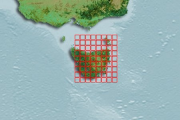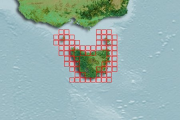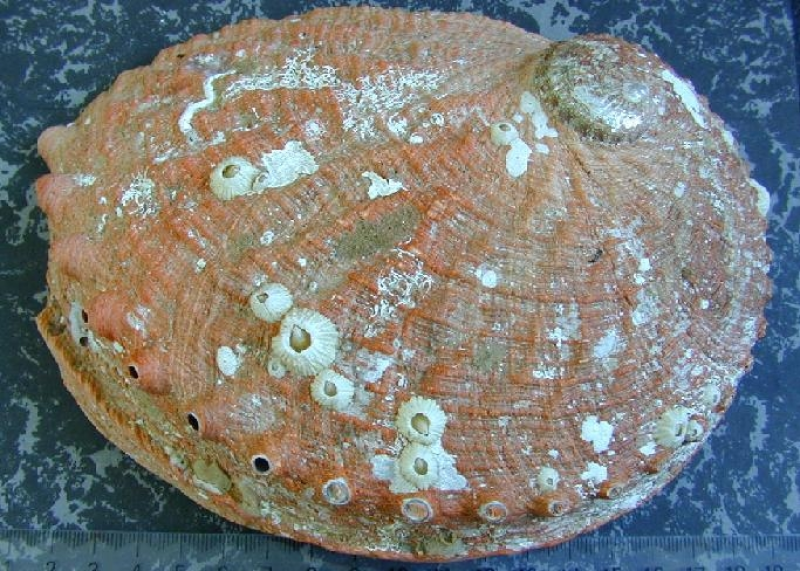Fisheries Sciences not elsewhere classified
Type of resources
Topics
Keywords
Contact for the resource
Provided by
Years
-
Lipofuscin density in Giant Crab (Pseudocarcinus gigas) brain tissue was estimated through fluorescent microscopy. The intent was to relate lipofuscin to crab age. Some known age specimens were included in the sample, these were reared from larvae.
-

Underwater video technology was used to observe marine mammal interactions (seals, in particular Australian fur seals) within midwater trawl nets. A camera system was placed inside the trawl net in the vicinity of a Seal Excluder Device, designed to prevent megafauna from entering the codend of the net and provide an escape point. Digital video data was described according to a range of operational, catch and interaction fields, and made time-specific to each trawl shot. Data is linked to commercial catch and effort data providing operational, environmental and catch information.
-
Inter-moult duration in giant crabs (Pseudocarcinus gigas) was estimated by an alternative method to utilising tag-recovery data. Reproduction in female giant crabs occurs in annual cycles, although females occasionally “skip” a reproductive season and do not become ovigerous; it has been noted previously that this appears to be associated with molting. Thus the proportion of females that do not participate in reproduction may indicate the proportion molting. This approach was tried with a sample of 342 females and the number that were “skipping” a reproductive season was measured by computerized tomography scanning (CT-scanning) of their ovaries prior to the extrusion of eggs. Radiometric aging (228Th/ 228Ra) of carapaces was also undertaken with the focus of this work on testing an assumption of the method, rather than describing the intermolt duration of a population.
-

This projects' data on abalone translocations is stored in two databases containing data collected for abalone aggregation and larval surveys in Tasmania. Genetic information has also been generated using microsatellites.
-
The dataset comprises abalone abundance and algal cover information on 'control' reefs and 'translocation reefs' in Tasmania.
-
To test if the carapace length of lobsters changes during cooking, 21 legal-sized southern rock lobsters were collected in pots from Alum Cliffs, south-eastern Tasmania, Australia in October 1999 (42.95±S 147.35±E). The sample consisted of 7 female and 14 male lobsters ranging in carapace length from 106 mm to 153 mm (mean 120 mm). Each animal was abdominally tagged using individually marked t-bar tags (Hallprint T-bar anchor tag, TBA1; Hallprint Pty Ltd, 27 Jacobsen Crescent, Holden Hill, SA 5088, Australia). The carapace length of all lobsters were measured five times to the nearest 0.1 mm in a random manner, before and after processing. This repeated measurement of all specimens in random order was intended to evaluate measurement error. Processing was typical of that used commercially and involved killing the lobsters in fresh water before cooking in pre-boiling salted water for 12 minutes.
-

Southern Rock Lobster (Jasus edwardsii) biological data collected by observers on commercial boats and dedicated research trips incorporating information on sex, length, weight, damage, reproduction, bycatch, protected species interaction, location, depth, tagging and equipment type.
-
Redmap is a primarily a website that invites the community to spot, log and map marine species that are uncommon in their region, or along particular parts of their coast. The information collected is mapped and displayed on the site, demonstrating, in time, how species distributions may be changing. Sightings are divided into two categories – those with a photo that can be ‘verified’ by a marine biologist, and sightings without photos that we call community sightings (anecdotal). All the information collected, with and without photos, is mapped and will be used in the following years to map out a ‘story’ of changes occurring in our marine environment. The main data collected includes the species sighted (normally selected from a list comprising preselected species of interest), the location, date/time and activity being undertaken. Other optional information gathered include biological data such as sex, size and weight and environmental data such as water depth and temperature and habitat. This record is associated with live data (and will subsequently change over time) and spatial elements have reduced accuracy. It is also subject to a three year embargo (ie. does not contain data less than three years old). If you wish to discuss obtaining a citable, static dataset, that is current and/or contains accurate spatial elements, please see Point of Contact.
-

The abalone commercial catch sampling project contains length-based samples from diver catches collected in Tasmania waters.
-

The dataset contains length frequency information for abalone species, collected in all Tasmanian state waters from 1988.
 IMAS Metadata Catalogue
IMAS Metadata Catalogue